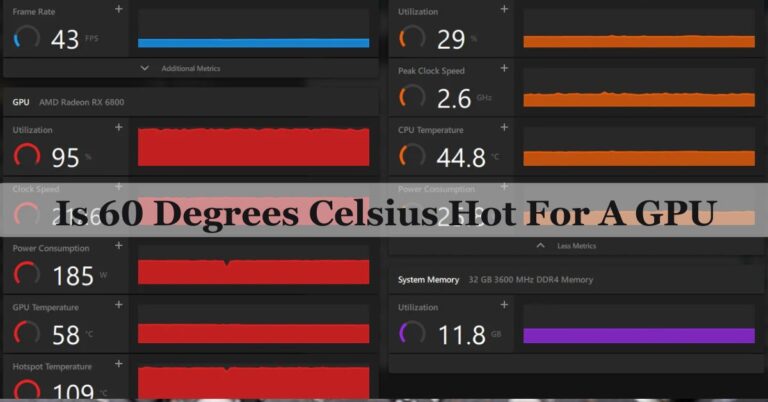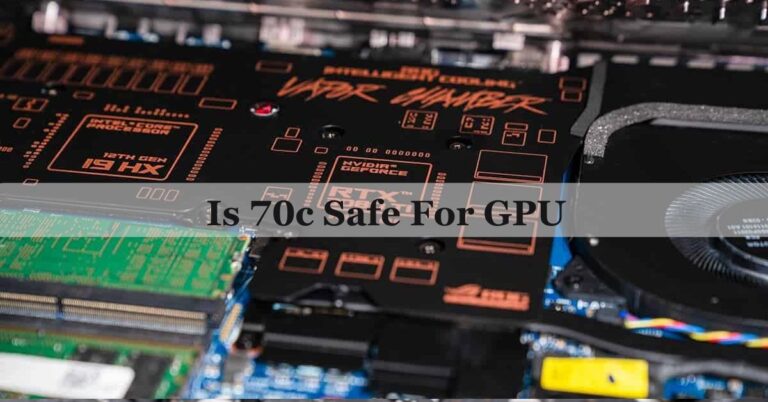Is 57° C Hot For A GPU? – Check GPU Temperature Now!
In my experience, 57°C is not hot for a GPU. I’ve seen it reach that temperature while gaming and it never caused any issues. As long as it doesn’t exceed 85°C, I’m comfortable with it.
No, 57°C is not hot for a GPU. It’s a normal temperature, especially during light or moderate use. As long as the temperature stays under 85°C, your GPU should be fine.
Stay tuned with us as we now talk about whether 57°C is hot for a GPU. We’ll cover what this temperature means and if it’s safe for your system to run at this level.
Understanding Normal GPU Temperatures
GPUs have specific temperature ranges depending on their use. When idle (not doing heavy tasks), the temperature is usually between 30°C and 50°C. During heavy use, like gaming, temperatures can reach 60°C to 85°C.
This is considered normal. Some GPUs can handle up to 95°C safely, but keeping them cooler is better. Knowing these ranges helps you figure out if your GPU is in a safe condition.
Read: Do You Need GPU For Data Science – Learn GPU Benefits Today!
Is 57° C Considered Hot for a GPU?
No, 57°C is not hot for a GPU. It is safe for most GPUs, even during moderate use. Modern GPUs are built to handle higher temperatures without issues. At 57°C, your GPU is functioning normally and there’s no need to worry. However, keeping track of your GPU’s temperature ensures it doesn’t get too close to higher, less safe levels.
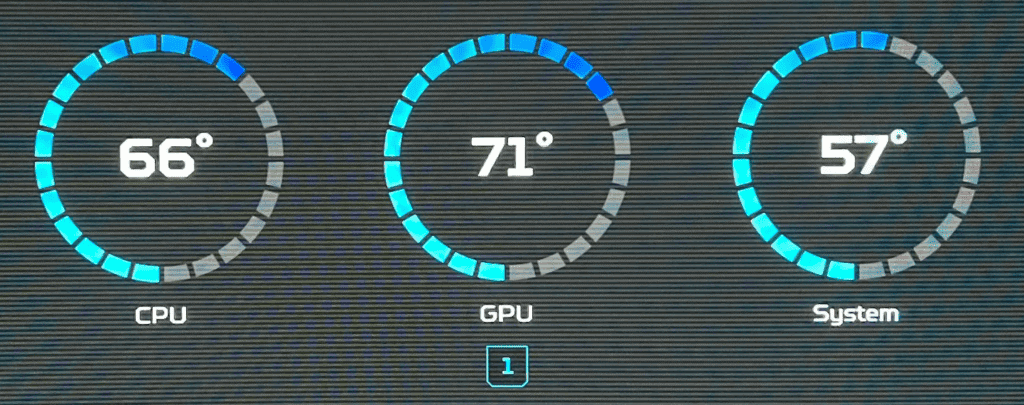
Factors Influencing GPU Temperatures
Workload:
Heavy tasks like gaming or video editing make GPUs work harder, increasing their temperature. More workload means the GPU generates more heat.
Cooling System:
The GPU\u2019s built-in fans or a PC\u2019s airflow help manage heat. A poor cooling system can cause high temperatures.
Room Temperature:
Hot environments make it harder for the GPU to stay cool. Cooler rooms help maintain lower GPU temperatures.
Dust Build-Up:
Dust blocks airflow and reduces fan efficiency, causing the GPU to heat up more quickly. Regular cleaning helps prevent this issue.
When Does GPU Temperature Become a Problem?
A GPU’s temperature becomes problematic if it consistently stays above 85°C (185°F) during use. High temperatures can shorten the GPU’s lifespan or cause the system to shut down to prevent damage. Most modern GPUs have safety features to reduce performance if they overheat, but it’s best to keep the temperature under 80°C (176°F) for smooth and safe operation.
How To Check GPU Temperatures?
You can check GPU temperatures using software like MSI Afterburner, HWMonitor, or Task Manager in Windows 10 or later. Open the software, locate the GPU section, and find the temperature reading.
Some GPUs also show temperatures in their driver software, like NVIDIA GeForce Experience or AMD Adrenalin. Keeping an eye on these temperatures helps you maintain good performance and prevent overheating.
Read: GPU Only Works In Second Slot – Boost Performance Now!
Tips To Keep GPU Temperatures Optimal
Ensure Proper Ventilation:
Keep your computer in a well-ventilated area. Avoid placing it in small or closed spaces where heat can build up. Proper airflow helps keep the GPU and other parts cool, reducing the risk of overheating.
Clean Dust Regularly:
Dust blocks airflow and makes your GPU hotter. Clean the computer’s fans and vents every few months using compressed air. This ensures the cooling system works efficiently.
Use High-Quality Thermal Paste:
Thermal paste transfers heat from the GPU to its cooler. Over time, it can dry out. Replace it with a good-quality paste every 2–3 years to improve heat transfer and maintain safe temperatures.
Set Fan Speeds or Use Cooling Profiles:
Use GPU software like MSI Afterburner to adjust fan speeds. Higher fan speeds improve cooling during heavy tasks like gaming. You can also use pre-made cooling profiles for better temperature management.
Monitor and Avoid Overclocking:
Overclocking increases GPU performance but also raises temperatures. Monitor your GPU and only overclock if the cooling system can handle it. For most users, running the GPU at default settings is safer.
Different GPUs and Their Thermal Limits?
GPUs from NVIDIA and AMD have varying thermal limits based on their models. Generally, modern GPUs can safely operate between 70°C to 85°C during heavy use. High-end cards like NVIDIA RTX 30-series or AMD RX 6000-series can tolerate up to 90°C. Always check the manufacturer’s specifications for your specific GPU model.
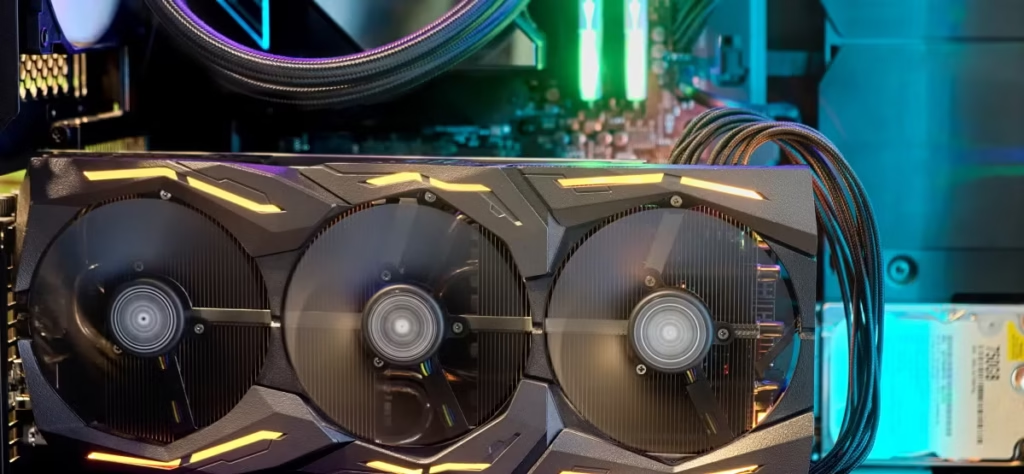
Is 57 Degrees Hot For A GPU?
No, 57°C is not hot for a GPU. Most GPUs can safely run between 50°C and 85°C during use. At 57°C, the GPU is working within a normal temperature range, especially during light tasks or idle time. There is no need to worry about overheating at this temperature.
Is 58 Celsius Good For GPU?
Yes, 58°C is a good temperature for a GPU. It is well within the safe operating range for most GPUs, which is usually between 50°C and 85°C. This temperature is normal during regular use or gaming. Your GPU is running efficiently, and you don’t need to take any extra steps.
Is 59 C Too Hot For GPU?
No, 59°C is not too hot for a GPU. It falls within the safe range for most GPUs, which can handle up to 85°C or higher under heavy load. This temperature is normal during moderate use, so your GPU is performing well without any risk of overheating.
How Hot Should A GPU Be In C?
A GPU should typically stay between 50°C and 85°C during use. For light tasks, it may be around 40°C to 60°C, while for gaming or heavy work, it can rise to 70°C to 85°C. Staying below 85°C ensures your GPU works safely and performs efficiently without long-term damage.
Read: Runtimeerror: No GPU Found. A GPU Is Needed For Quantization. – Fix GPU Error Now!
57°C Idle Temps For GPU? (Ncase M1 / 3080 Ti)
An idle temperature of 57°C for a 3080 Ti in a Ncase M1 is slightly high but not unusual, especially in compact cases with limited airflow. Factors like room temperature and running background tasks can affect this. Improving airflow or lowering fan curves in GPU software can help reduce idle temperatures.
If you need more details, click on this Reddit link: https://www.reddit.com/r/sffpc/comments/u27v46/57c_idle_temps_for_gpu_ncase_m1_3080_ti/.
Is 57°C A Good Idle Temperature For GPU?
While 57°C at idle is safe for most GPUs, it’s slightly higher than ideal. Normal idle temperatures are usually between 35°C and 50°C. Check if unnecessary background tasks or software are running. Cleaning dust from fans or ensuring good airflow in your PC case can help improve the temperature.
For more details, visit Reddit: Is 57°C A Good Idle Temperature For GPU?
What Does 57° C Mean For A GPU’s Performance?
A temperature of 57°C for a GPU is normal and not a concern for performance. It means the GPU is operating within safe limits. The GPU can run games or heavy tasks smoothly at this temperature without overheating. However, if temperatures rise above 85°C, performance may drop to protect the hardware.
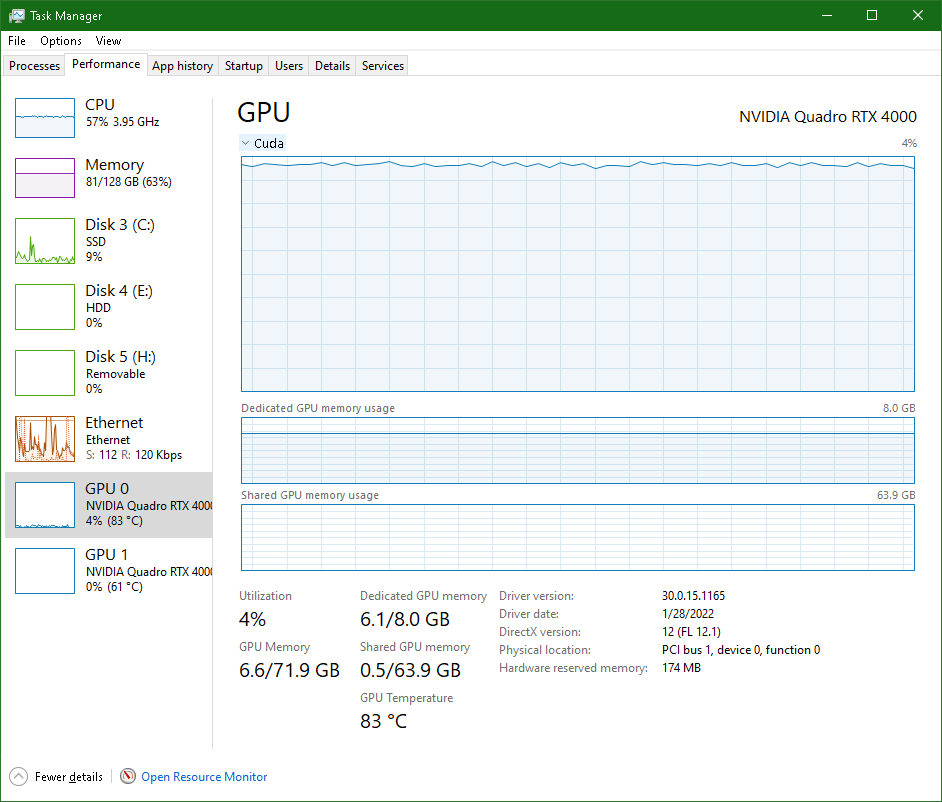
Is 57° C A Good Temperature For Gaming On A GPU?
Yes, 57°C is a good temperature for gaming. It is within the typical safe range for most GPUs. Gaming can put a heavy load on the GPU, but at 57°C, the GPU is performing efficiently without the risk of overheating. This temperature should not cause any issues during long gaming sessions.
Can 57° C Harm My GPU In The Long Term?
No, 57°C is not harmful to your GPU in the long term. Most GPUs are designed to run at higher temperatures, even reaching 80–90°C without damage. As long as the temperature stays around 57°C, your GPU will last for many years without any lasting effects.
Does A GPU Running At 57° C Need Better Cooling?
No, a GPU running at 57°C does not require better cooling. It is within the safe temperature range. However, if you notice that your GPU consistently reaches temperatures above 70°C during heavy use, then improving cooling might help maintain performance and extend the GPU’s lifespan.
Should I Be Concerned If My GPU Is Always At 57° C?
No, there’s no need to be concerned if your GPU is always at 57°C. This is a healthy operating temperature and indicates that the cooling system is working well. As long as temperatures remain steady and below 80°C during heavy tasks, your GPU should continue to perform optimally.
Read: Is Beamng CPU Or GPU Intensive – Complete Guide 2024!
Frequently Ask Questions:
1. How Does 57° C Compare To Other Normal GPU Temperatures?
57°C is within the normal range for many GPUs during light to moderate use. Most GPUs operate safely between 40°C and 85°C, with 57°C being a healthy temperature.
2. Is It Normal For A GPU To Reach 57° C During Light Use?
Yes, 57°C is normal for a GPU under light use, such as web browsing or watching videos. However, temperatures can vary depending on the GPU model and environment.
3. Does A GPU Running At 57° C Affect Other Components?
No, 57°C is not high enough to affect other components. Most computer parts are designed to handle temperatures up to 85°C without problems, so 57°C is safe.
4. What Is The Safe Temperature Limit For Most GPUs?
The safe temperature limit for most GPUs is typically between 85°C and 90°C under heavy load. Temperatures beyond this range can cause thermal throttling or damage over time.
5. How Quickly Can A GPU’s Temperature Rise Above 57° C?
A GPU’s temperature can rise above 57°C quickly under heavy load, such as gaming or rendering. Cooling systems may take time to adjust, but temperatures can stabilize within minutes.
6. Does 57° C Mean My GPU Fan Is Working Properly?
57°C doesn’t necessarily mean the fan is working perfectly, but it’s a good sign. If temperatures rise too high, the fan may not be working effectively and should be checked.
7. Can The Room Temperature Cause A GPU To Stay At 57° C?
Yes, room temperature affects GPU temperatures. In a hot environment, the GPU can reach higher temperatures, like 57°C. Ensuring a cool room can help maintain lower GPU temperatures.
8. Is 57° C Okay For Older GPU Models?
Yes, 57°C is safe for most older GPU models. Older GPUs tend to have higher thermal limits, so they can operate comfortably at this temperature without risk of damage.
9. How Does 57° C Affect GPU Lifespan?
57°C has little impact on the GPU lifespan. As long as temperatures remain within safe ranges (under 85°C), the GPU should last for many years without any significant degradation.
10. Should I Monitor My GPU More Closely If It Reaches 57° C?
There’s no need to monitor your GPU closely at 57°C unless temperatures increase further. Regular monitoring can help, but 57°C is generally safe for most GPUs under normal use.
Conclusion:
In conclusion, 57°C is a normal and safe temperature for most GPUs, especially during light use or gaming. It is well within the safe operating range. However, it’s important to monitor your GPU regularly to ensure it doesn’t exceed higher temperatures, as this could lead to overheating or damage. Proper cooling and ventilation can help maintain safe temperatures for longer GPU life.
Related Posts:
- Is 70c Safe For GPU – Learn GPU Safety Tips!
- Is 60 Degrees Celsius Hot For A GPU – Keep GPU cool today!
- PS5 GPU Equivalent – Compare PS5 GPU Today!
- What Is A Good GPU Clock Speed MHz – Boost Your GPU Efficiency!



